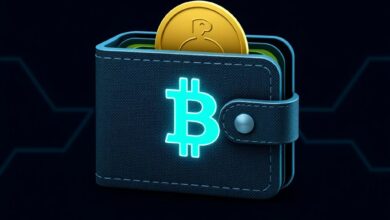Tips for keeping your crypto safe in 2025

Always keep your private key offline. Store it in a secure location, such as a hardware wallet or an encrypted USB drive. This minimizes the risk of unauthorized access and potential theft.
Regularly create backups of your wallet data and private keys. Utilize multiple storage methods, including physical copies and cloud storage, ensuring you can recover your funds in case of loss or damage.
Implement two-factor authentication (2FA) on all accounts related to cryptocurrency transactions. This adds an additional layer of protection against unauthorized access and enhances security for your investments.
Stay informed about phishing scams and other fraudulent activities. Always verify URLs before entering sensitive information, ensuring you’re interacting with legitimate platforms.
Consider diversifying your holdings across multiple wallets. This approach limits exposure if one wallet becomes compromised, reducing overall risk to your portfolio.
Use Hardware Wallets Securely
Always set up a hardware wallet in a secure environment. Avoid using public Wi-Fi when initializing your device to minimize risks of interception.
Generate and store your private key offline. This reduces the chances of online threats compromising your access. Never share this key; it is the only way to recover your funds if needed.
Create multiple backups of your wallet recovery phrase. Store these backups in different, secure locations to safeguard against loss or damage.
Be vigilant against phishing attempts. Only download firmware updates from official sources and verify URLs before entering any sensitive information.
An unguarded private key can lead to irreversible losses. Regularly review security practices to ensure they align with current threats and technologies.
Enable Two-Factor Authentication
Activate two-factor authentication (2FA) on all your accounts to significantly reduce the risk of unauthorized access. This security layer requires not only a password but also a second form of verification, such as a text message or authentication app code. Choose an authenticator app over SMS for better protection against interception.
Regularly review and update your 2FA methods. Some platforms allow backup codes; store these securely offline in case you lose access to your primary method. This ensures you can regain control without compromising your private key.
Be cautious with devices used for 2FA. Ensure they are secure and free from malware, as compromised devices can lead to breaches despite having two-factor authentication enabled. Always back up your recovery options to prevent losing access during emergencies.
Regularly Update Software
To minimize the risk of cyber threats, ensure that all software related to your digital holdings is consistently updated. This includes wallets, exchanges, and any other tools used for managing assets. Regular updates often contain patches for vulnerabilities that could be exploited by attackers.
Backup your data after each update to maintain access in case of unexpected issues. This practice ensures that you can recover your information swiftly if something goes wrong during the update process.
Be vigilant against phishing attempts that may arise following updates. Cybercriminals often exploit new releases to trick users into providing sensitive information. Always verify the legitimacy of sources before downloading any updates.
Implementing these practices enhances your overall protection and significantly reduces the likelihood of unauthorized access or loss of assets due to outdated software vulnerabilities.
Avoid Phishing Scams
Always verify the source before clicking any links or downloading attachments. Malicious actors often use deceptive emails and websites to steal your private key.
- Examine URLs: Check for misspellings or unusual domains in web addresses. Legitimate sites will have recognizable and secure URLs.
- Do not trust unsolicited messages: Be wary of emails or messages claiming urgent actions related to your accounts. Official communications rarely request sensitive information directly.
- Use bookmarks: Create bookmarks for important websites instead of relying on search engines. This reduces the risk of landing on fraudulent sites.
- Enable email filters: Utilize spam filters to reduce phishing attempts in your inbox. Regularly review these settings to ensure they are effective.
Regularly back up your important data and private keys offline. This precaution ensures that even if you fall victim to a scam, you won’t lose access to your holdings permanently.
- Educate yourself: Stay informed about common phishing tactics. Knowledge is a powerful tool against deception.
- Report suspicious activity: If you encounter potential scams, report them to relevant authorities or platforms to help protect others.
Cultivate a habit of scrutinizing every communication regarding your investments. Being vigilant is key in minimizing risk and safeguarding your digital assets.







